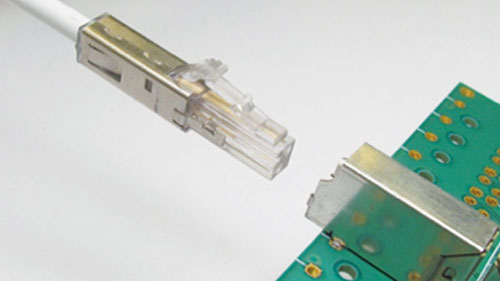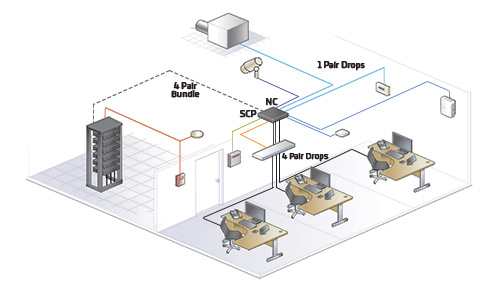How to simplify IoT connections with single pair Ethernet
Transmitting reliable, simultaneous power and data to billions of devices
IoT Analytics estimates that by 2025 there will be approximately 27 billion connected IoT devices. Fortunately, the bulk of these devices won’t require a lot of bandwidth or power—making single pair Ethernet an ideal solution for the sensors and actuators found in tomorrow’s building automation and manufacturing equipment and alarm systems.
Single pair Ethernet (SPE) utilizes one pair of copper wires—also referred to as “twisted pair”—to transmit data at speeds of up to 1 Gbps and deliver up to 50 watts of dc power via Power over Data Lines (PoDL). Single pair Ethernet supports low power and low data over very long distances, up to 1000 meters and higher speeds and higher power up to 40 meters.
| Standard | Speed | Distance/power |
| IEEE 802.3cg | 10BASE-T1S | 15 meters |
| IEEE 802.3cg | 10BASE-T1L | 1,000 meters |
| IEEE 802.3cg | 10BASE-T1S (multidrop) | Eight nodes, 25 meters |
| IEEE 802.3bw | 100BASE-T | 40 meters |
| IEEE 802.3bu | Power over Data Line (PoDL) PoE for SPE | 0.5–52 watts (multiple classes) |
Figure 1: Single pair Ethernet (SPE) performance chart
One major advantage of deploying single pair Ethernet resides in how the unified communications protocol functions. This allows for the collection and sharing of sensor information. As a result, machine-to-machine communications can manipulate actuators and perform other actions in enterprise buildings and manufacturing facilities.
Through PoDL, SPE delivers continuous, reliable dc power that eliminates batteries and separate powering circuits for the device. In addition, its Ethernet connection offers data security stronger than traditional Wi-Fi or legacy wired communication protocols. And because of a compact footprint that’s 25 percent smaller than traditional four pair Ethernet, deploying SPE in retrofit environments is simple and fast.
This does not mean single pair versus four pair Ethernet requires an “either/or” decision. The two wiring options are not mutually exclusive and, in many cases, will coexist in support of multiple applications.
No-cost SPE patent licensing
As an integral developer of SPE technology and standards, including the IEC 63171-1 single pair Ethernet connector system, CommScope is proud to offer IP licensing at no cost to the market to support future development of SPE systems. If you are interested in developing SPE systems, please click here for our patent licensing information.
CommScope continues to participate in several single pair Ethernet industry initiatives, including the TIA SPEC (Single Pair Ethernet Consortium), Ethernet Alliance—Single Pair Ethernet Subcommittee, IEC, IEEE, ISO and TIA Single Pair Ethernet Standards Development.
Discover more
White Paper: Single twisted pair Ethernet cabling for IoT and M2M applications
Discover why light, thin, and robust single pair Ethernet is becoming an increasingly popular way to provide connectivity for next-generation IoT applications.
White Paper: Single pair Ethernet (SPE) connector clarity
Explore the types of single pair Ethernet connectors and applications as well as capabilities in this joint white paper by CommScope, Panduit, and Leviton.
Blog: Single Pair Ethernet Will Connect IoT Devices
There are instances when new media types are developed to provide more cost-effective transport for lower speed applications. Case in point: single pair Ethernet. Learn more in this blog post.
Single pair Ethernet licensing program
Learn about our single pair-IEC patents available for licensing.



